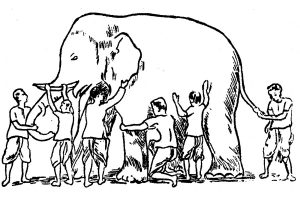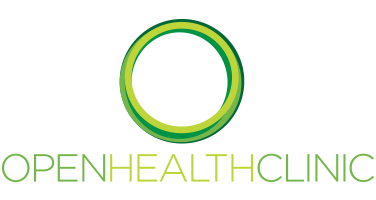
27 Apr Osteopathy, Holism, and Elephants
It’s time for a blog entry about osteopathy, and to be honest I’ve been nervous about it. This is because osteopathy is different from osteopath to osteopath, and some osteopaths can get quite vitriolic when they come across a version of osteopathy that is inconsistent with their views.
It reminds me of the story of the blind men and the elephant (you can read about it here) because osteopaths can perform osteopathy in ways that appear unrecognisable from each other, but they are in fact all treating their patients with parts of the same creature.
If I was worried that this was my own opinion, I felt better when I read this in the latest edition of the International Journal of Osteopathic Medicine; from the editor no less:
“Osteopathy is complex. As a discipline, we have osteopaths … (who) share features and yet are distinguished by differing characteristics including their scope and conception of practice.”
So no wonder patients often ask us “what is osteopathy?” and “what’s the difference between osteopathy, chiropractic and physiotherapy?”.
I’m not going to try and answer those questions in anything approaching entirety, but I thought I would tackle a few parts of the creature spread across a few blogs. I’ll try to stay balanced, and not just describe the part of the elephant this blind man (me!) is feeling.
What does holistic mean?
Osteopathy is commonly described as being holistic, and indeed derives many compliments from patients because this is how they feel they have been treated. Yet when some patients hear or use the word holistic, the connotation can be of therapies that are further down the alternative route.
The word holistic is the adjective of holism, and holism is the opposite of reductionism. Reductionism is the break-down of an object into its constituent parts, and importantly for healthcare, it describes how modern medicine often works.
The reductionist view of a patient’s body is to break it into separate systems: cardiovascular, digestive, neurological. This is why when you get sent to specialists you end up seeing cardiologists, gastroenterologists and neurologists, as they are the individuals who specialise in treating those parts of your body.
Osteopathy however looks at the body as an integrated system and deals with it mechanically. The premise is that if all the parts of the body are arranged properly then they should work properly and interact efficiently.
At one corner of the osteopathic elephant, an osteopath treating a knee injury will consider how a patient’s ankle, hip and low back movement create demand on the knee as well as treating the knee itself.
At the same time, an osteopath who treats digestive disorders (the elephant’s tummy?) will look at how thoracic and lumbar posture, diaphragm activity, and intestinal mobility are interacting to facilitate healthy digestion.
It is the connection between different parts and systems of the body that represents osteopathy’s claim to be holistic.
It would be presumptuous however to claim that this is unique to osteopathy. Physiotherapists for example will look beyond just the knee to tackle knee injuries, and hospital consultants will consider the effect of other body systems on the presenting complaint given the time and resources. After all, it’s a sensible approach to take once you understand anatomy and physiology.
But if you encounter a reductionist medical system as a patient, you’re likely to be sent to the relevant specialist for the part or system of you that requires investigation. You’re then likely to remain under the watchful eye of practitioners who have been instructed to examine and treat that part, and that part alone. They can be restricted by the time allowed, and often must stick within the remit they have been instructed to work within.
A more holistic approach takes time, and can quickly consume resources where required. With the time-pressure that typifies public medicine in the UK, even the best practitioner will struggle to step back and take a wider, more holistic look at the interconnection between body parts and systems that are influencing your problem.
At OpenHealth our osteopaths have longer appointments than most clinics, and we find that this extra time is priceless in obtaining some of the more peripheral details that often reveal the key to unlocking the patient’s problem.
That’s a start at looking at osteopathy, or at least at one of the terms that is often used to define it. There’s plenty more to tackle…
If you’re interested in meeting one of our osteopaths and seeing what osteopathy can offer you, get in touch with us and we’ll be glad to help.



No Comments